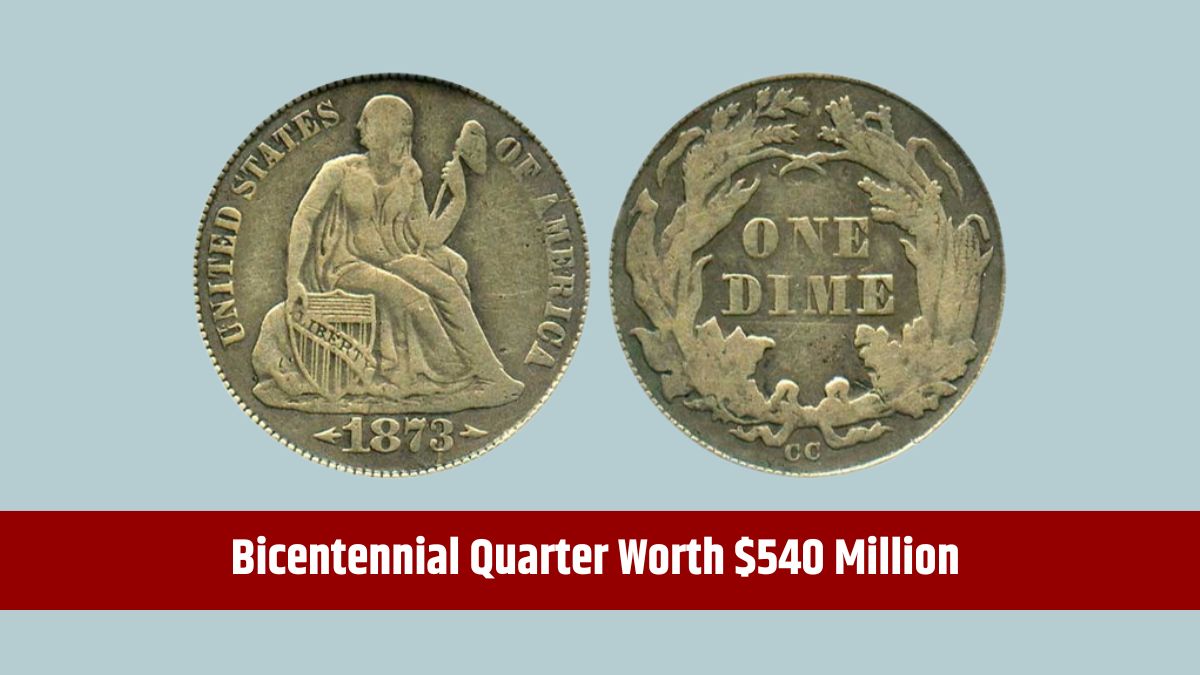
Imagine discovering that a simple coin in your pocket could be worth millions. It may sound like fantasy, but rare coin collectors are buzzing over one extraordinary example: the Bicentennial Quarter, with some claiming versions of it could be valued up to $540 million. But what makes this coin so special—and could you unknowingly have one?
Let’s dive into the story behind the Bicentennial Quarter, its features, why some versions are so valuable, and how you can tell if you’ve struck gold.
What Is the Bicentennial Quarter?
The Bicentennial Quarter was minted in 1976 to celebrate the 200th anniversary of American independence. Unlike regular quarters, this one features a special reverse design showing Independence Hall in Philadelphia instead of the usual eagle. It’s part of a series of commemorative coins released that year, including the half dollar and dollar coin.
Key Features:
- Reverse Design: Independence Hall with “1776–1976” and “200th Anniversary of American Independence”
- Obverse: George Washington’s portrait (same as traditional quarters)
- Composition: 91.67% copper, 8.33% nickel
- Weight: 5.67 grams
- Mint Marks: Philadelphia (no mark), Denver (D), San Francisco (S for proof versions)
Why Are Some Bicentennial Quarters Valuable?
Most Bicentennial Quarters are common and only worth their face value. However, certain rare versions—especially those with minting errors or uncirculated/proof finishes—can be worth hundreds, thousands, or even millions.
Most Valuable Types:
- Proof Coins: Special collector’s versions with a polished finish, often minted in San Francisco.
- Uncirculated Coins: Coins that never entered public circulation and remain in mint condition.
- Error Coins: Misprints like doubled die errors or off-center strikes are extremely rare and highly collectible.
The $540 Million Quarter – Fact or Fiction?
The famous $540 million valuation refers to hypothetical or speculative value, likely for a unique, error-laden, high-grade example with historical significance. While no public sale has reached this number, it reflects the extreme value that rare coins can achieve—especially when collectors compete in private auctions.
Examples of High-Value Quarters:
- Doubled Die Errors: Dramatic minting mistakes that double parts of the design
- Low-Mintage Proofs: Limited-run versions in exceptional condition
- Historically Significant Errors: Coins with production mistakes linked to specific events or mint periods
Could One Be Hiding in Your Pocket?
It’s unlikely you’ll stumble upon a $540 million coin in your loose change—but it’s not impossible to find valuable quarters if you know what to look for.
Here’s how to start:
- Inspect Your Coins
- Check for mint marks (especially the “S” for proof coins)
- Look closely for errors like doubling, misalignment, or unusual designs
- Evaluate the condition—uncirculated coins are always more valuable
- Look for Proof and Uncirculated Versions
- These coins may have come in special collector sets
- If stored safely, they could retain high value
- Get a Professional Opinion
- Reputable coin dealers or numismatists can authenticate and appraise your coins
- Join Online Communities
- Participate in coin forums, attend auctions, and stay updated on rare coin trends
Final Thoughts
The tale of the $540 million Bicentennial Quarter serves as a reminder of how history, rarity, and error can combine to create a collector’s dream. While it’s rare to find such a high-value coin, the world of numismatics offers plenty of opportunities to uncover treasure—sometimes even in your own pocket.
Whether you’re a seasoned collector or a curious beginner, keep your eyes open. That ordinary-looking quarter could be more than just spare change—it might be a small fortune in disguise.
